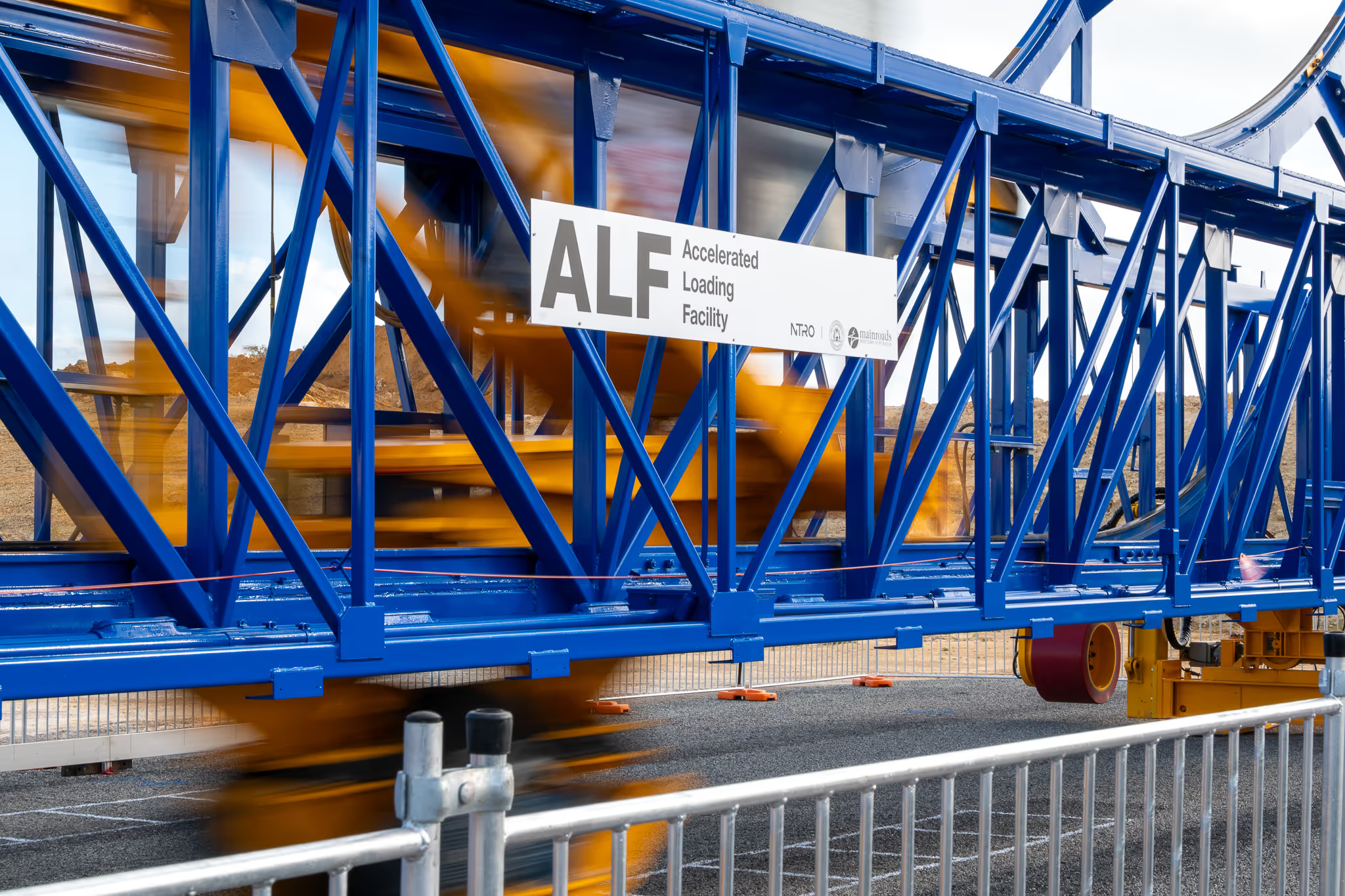Project overview
This project with the Western Australia Department of Transport consists of data collection of 16 small to medium airports across WA. Data collection was conducted with the traditional Heavy (Falling) Weight Deflectometer (HWD) trailer and with the NTRO’s next generation iPAVE vehicle.
The HWD testing drives Pavement Condition Number (PCN) calculations based on the structural strength of the airport runways and associated support assets such as taxiways and aprons.
The iPAVE collects condition data along the airport assets and enables the NTRO and WA DoT to compile a detailed report that incorporates structural and condition data.
High level discussion of objectives
Historically airports have been analysed through ACN/PCN (Aircraft / Pavement Classification Number) calculations, this will be replaced by ACR/PCR (Aircraft / Pavement Classification Rating) in 2024, which are reliant on HWD testing to analyse the structural capacity of airports runways and support structures.
On the tested airports, the HWD equipment spent on average around 8 hours to collect 200 data points along a single runway, taxiway and apron. This translates to airport closures, possible flight delays, operational complications and personnel safety concerns as the equipment spends a long time on the assets.
In comparison, the iPAVE equipment collected the same (and much more detailed) data set in 30 minutes or less. This is an immense time saving which also negates the need for airport closures while minimising health and safety risks to personnel.
Technical information
The HWD collects singular data points at set intervals, measuring the deflection of the pavement under loading. This is the only data recorded and is used in the backanalysis of the material to determine the modulus of the pavement layers. This in turn drives the PCN calculations to determine which aircraft can utilise the airport runway and supporting infrastructure. The HWD does not collect any condition data.
The iPAVE vehicle collects deflection data through a Traffic Speed Deflectometer (TSD) while simultaneously collecting condition data: roughness (IRI count), rutting (mm), textured depth (mm), GPS location (lat, long) and video imagery. This condition data, coupled with structural data, allows NTRO to compile a comprehensive condition report on the airport which can inform maintenance schedules, upgrades and operating level of service through data backed analysis.
Future works / Outcomes
The project is split into two main deliverables: condition reports for each airport and research into the implementation of TSD in PCN/PCR calculations.
The condition reports are delivered to the WA DoT to drive future works and upgrade considerations for all assessed airports.
The further research into the use of TSD data in ACR/PCR calculations are ongoing and have exhibited promising early results.
The ultimate outcome for NTRO, our stakeholders and clients is to provide a complete, fast and reliable method to assess airport assets through our next generation iPAVE equipment and industry expertise.
For more information, contact us at info@ntro.org.au



_3.jpg)









